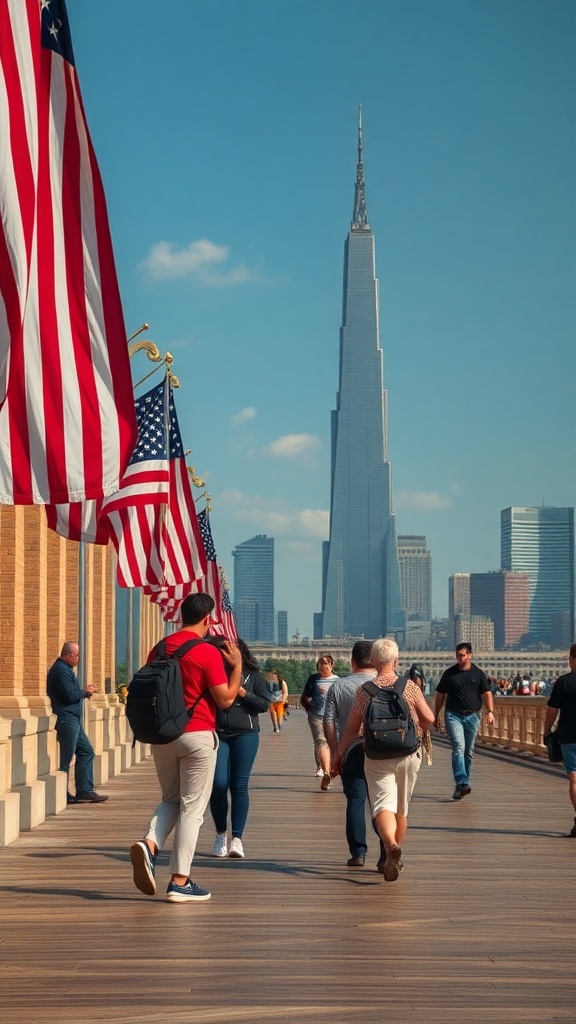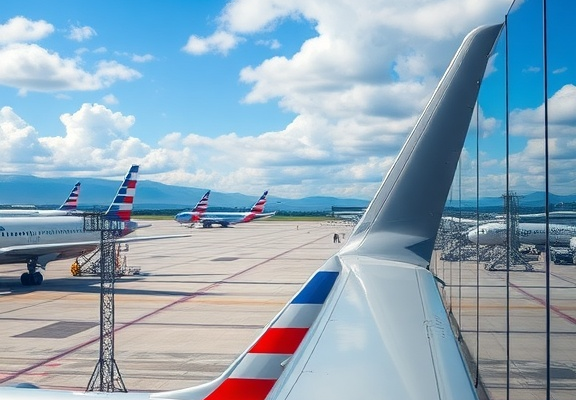The Impact of the Trump-Era Decline in Visitors on the U.S. Economy and Tourism Industry
The decline in visitors during the Trump era significantly impacted the U.S. economy and the tourism industry, creating a ripple effect that continues to resonate today. When people think about travel to the United States, they often consider factors like safety, culture, and accessibility. However, during the Trump administration, various policies made the U.S. a less welcoming destination. This shift caused a noticeable decrease in international visitors, leading to economic repercussions across multiple sectors.
Thank you for reading this post, don't forget to subscribe!Several elements contributed to the drop in visitors, both during and after the Trump presidency. The combination of stricter immigration policies, heightened travel restrictions, and anti-foreign rhetoric created an environment that many found uninviting. Here are some specific reasons that contributed to the decline:
- Travel Restrictions: The implementation of travel bans affected tourism from specific countries, deterring potential visitors.
- Increased Visa Costs: The introduction of a new $250 visa fee further discouraged tourists from planning trips to the U.S. This extra financial burden makes it more challenging for families and individuals to visit.
- Heightened Political Tension: A politically charged atmosphere can make potential visitors feel uneasy about traveling to the U.S. The perception of American society during this time pushed many away.
- Negative Media Coverage: International news narratives, often highlighting division and incidents of unrest, may have influenced travel decisions negatively.
These factors collectively contributed to a sharp decline in visitation numbers, impacting various sectors of the economy. The tourism industry, which is a significant driver of jobs and income in the U.S., was particularly hard hit. Here’s how the economy felt the pinch:
- Job Losses: Many workers in the tourism sector rely on international visitors. As these numbers dropped, so did employment in areas like hospitality, travel services, and entertainment.
- Reduced Revenue: Businesses that thrived on tourism, such as hotels, restaurants, and attractions, faced dwindling profits. This scenario led to closures and loss of livelihoods.
- Impact on Local Economies: Communities that depend on tourism for their economic stability, particularly those near tourist attractions, saw significant declines in revenue. Stores and services began suffering as foot traffic diminished.
Additionally, the new $250 visa fee introduced further obstacles for would-be travelers. This fee represents a significant additional cost, leading many potential visitors to reconsider their plans. Families on a budget, students looking to study abroad, and tourists seeking a unique American experience found it increasingly challenging to justify the expense. The perception that the U.S. is becoming a more expensive destination has led to shifts in travel behavior. More travelers are considering alternate destinations with lower costs and fewer obstacles.
Moreover, the combination of the visa fee with travel restrictions means that a considerable demographic of travelers may explore other options. Europe, Asia, and even neighboring countries offer competitive experiences without the added costs and complications that come with visiting the United States.
In 2020 and onward, the pandemic further complicated the situation. Travel was halted globally, but the groundwork for recovery is essential as the world begins to reopen. Therefore, understanding how the decline during the Trump era continues to affect the tourism sector is crucial for recovery efforts.
Some strategies that may help revive the tourism sector in the U.S. involve:
- Reassessing Visa Fees: Reducing visa fees could attract more international travelers, improving access to the U.S. market.
- Inclusive Policies: Implementing welcoming travel policies can restore the once open image of America, encouraging foreign visitors.
- Enhanced Marketing Efforts: A robust marketing campaign highlighting American culture, diverse experiences, and newfound safety measures can rekindle interest.
The Trump-era decline in visitors has had a profound impact on the U.S. economy and tourism industry. From lost jobs to decreased revenues, the repercussions are vast. Continuing to address the barriers put in place during this time and focusing on welcoming tourism initiatives will be essential for the recovery and future prosperity of the sector.
Analyzing the Effects of the New $250 Visa Fee on International Travel to the United States
The recent implementation of a $250 visa fee for international visitors to the United States has stirred discussions across the globe. Travelers often look at the cost of entry when planning trips, and this new fee brings about a significant change that is likely to impact visitor numbers significantly.
From the onset of the Trump administration, there was a noticeable decline in international travel to the U.S. This decline was fueled by various factors, including stricter immigration policies and a general sentiment of unwelcomeness. Now, with the addition of the high visa fee, potential travelers may think twice before making plans to visit. This article unpacks the possible repercussions of the new fee and how it fits into a larger trend of decreasing visitors to the United States.
Reasons Travelers Might Reconsider Visiting the U.S.
- Increased Financial Burden: The new visa fee represents a steep increase that adds to the overall cost of travel, including flights, accommodation, and daily expenses. This may dissuade many from investing in a trip to America.
- Global Competition: Other countries are vying for travelers’ attention as tourist destinations. If the U.S. becomes more expensive, travelers might choose destinations that offer similar experiences without the hefty upfront costs.
- Political Climate: The perception of America can greatly influence people’s desire to visit. Ongoing political tensions and a perception of an unfriendly atmosphere may deter international visitors.
- Length of Stay: With the added cost of getting a visa, travelers might opt for shorter stays or skip the U.S. entirely, thereby diminishing their chances to spend money in local economies.
When considering a trip to the U.S., travelers are now faced with additional factors to weigh. For many, the upfront $250 fee could mean they have to allocate a greater portion of their budget to just gaining entry. This can lead to a broader decision-making process where potential visitors evaluate if the United States still offers them the value they seek.
Effects on Tourism-Related Industries
The ripple effects from the decline in visitors are likely to spread across numerous sectors relying heavily on tourism. These industries include:
- Hospitality: Hotels, motels, and rental services benefit significantly when international travelers fill their rooms. A drop in visitors can lead to decreased occupancy rates and financial struggles for these businesses.
- Retail: International visitors often contribute to shopping both in-store and online. A decline in tourist numbers may impact sales revenue for brands that depend on tourist spending.
- Transportation: From airlines to ground transportation, a decrease in visitor numbers can hurt businesses associated with travel, leading possibly to reduced service offerings or layoffs.
Potential Solutions to Mitigate Decline
To counteract the current trends, the U.S. government and tourism boards may need to consider strategies to attract international visitors despite the increased visa costs:
- Promotional Campaigns: Initiatives showcasing the unique experiences that only the U.S. can offer could reignite interest among travelers.
- Reducing Additional Fees: The government could consider subsidizing the visa fee for specific groups, such as students or long-term travelers, to encourage visits.
- Streamlining Processes: Making the visa application process more efficient can help alleviate frustrations and encourage visitors.
The $250 visa fee poses a real challenge to the U.S. tourism industry, as it caps off an already troubling trend initiated during the last few years. It will be essential for stakeholders in the tourism sector to creatively address these issues to ensure that the United States remains an attractive option for international travelers.
As someone planning a trip, you should always weigh the costs and benefits carefully when considering your travel plans to the U.S. Understanding the factors at play, including the new visa fee, is crucial for making informed decisions.
Conclusion
The decline in visitors to the United States during the Trump era has created significant ripples across both the economy and the tourism industry. As international travel waned, local businesses—particularly those reliant on tourism, such as hotels, restaurants, and attractions—felt the financial strain. Empty hotels and quiet entertainment venues tell a story of lost opportunities, where thriving tourist spots once bustled with life and commerce. The downturn isn’t merely a statistic; it affects jobs, local economies, and the essence of hospitality that America is known for worldwide.
Compounding this issue is the new $250 visa fee, which could deter potential visitors from undertaking the journey to the U.S. At a time when global travel is gradually recovering, the added financial burden makes America a less attractive destination. Travelers often weigh expenses carefully, and this fee could be the tipping point leading them to consider other countries with more welcoming visa policies or lower costs. The ramifications extend far beyond just numbers; they represent missed experiences, valuable cultural exchanges, and diminished human connections.
If we hope to revive our tourism sector and restore the vibrancy that once characterized our cities, it’s crucial to reconsider regulatory measures and explore incentives to encourage travel. Rebuilding the bridge between the U.S. and potential visitors requires solutions that prioritize accessibility and affordability. Only then can we hope to counter the trends of the past and usher in a more prosperous future for America’s tourism landscape. The path forward lies in engaging international travelers to embrace everything that the United States has to offer.






